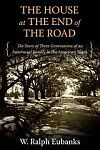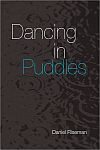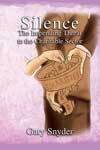Alumni Books
-
The House at the End of the Road: The Story of Three Generations of an Interracial Family in the American South
by Ralph Eubanks
In defiance of his middle-class landowning family, a young white man named James Morgan Richardson married a light-skinned black woman, Edna Howell. It was 1914 in south Alabama. Together they eventually built a house at the dead end of a road in a rural black community. If you came there to do the Richardson family harm, you faced Jim Richardson’s rule of justice, represented by a double-barreled shotgun. And at the end of the road, there was only one way out. “The House at the End of the Road: The Story of Three Generations of an Interracial Family in the American South” examines how one pioneering interracial couple developed a love and a racial identity that carried them defiantly through the Jim Crow years. Through interviews and oral history collected from both sides of the Richardson family’s racial divide, as well as archival research, The House at the End of the Road probes into the core of the issue of race in early twentieth-century America. At the same time, it takes the lessons of the past and places them under the scrutiny of a contemporary world adjusted to DNA ancestry testing, a more flexible sense of racial and ethnic identity, and a tolerance and acceptance of the racial ambiguity that laws prohibiting Jim and Edna Richardson’s marriage sought to eliminate.
-
The Nimble Men
by G. Guilford Barton (MA Arch. '81)
A bit of ancient Scottish folklore attributes the Northern Lights to a mythical tribe of creatures called the Nimble Men. “The Nimble Men” is the tale that myth inspired, one that weaves the colorful spirit of golf with the equally colorful legend. It’s a golf story. But like any good golf story, it’s about more than just golf. When a woman in a broken marriage enters an antique shop on a rainy day, she ends up getting more than she bargained for. Depressed and searching for answers, she hears the tale of two Scottish golfers from rival clans locked in mortal antipathy, and how a mythical being helps to reconcile them. She leaves the shop determined to seek a reconciliation of her own. It’s a story of love and hatred, friends and enemies, conflict and resolution, hope and magic. “The Nimble Men” is the first in a new series of golf stories: “Golf Is No Ordinary Game.”
-
Cyber Styletto
by Gian DeTorre and Mike Brennan, with Richard Stiennon
Super hacker Yvonne Tran, part of a secret government agency called CyberCom, is brought in to investigate a malicious network attack that caused the deaths of eight innocent people. She and her team follow the trail to Hong Kong and Afghanistan, and they must pinpoint the source before the next attack, which has the potential to kill hundreds of US citizens. It is for sale at cyberstyletto.com, where U-M grads can receive a discount coupon.
-
Dancing in Puddles
by Daniel Riseman
Jacob Feldman is a senior at the University of Michigan and is desperately searching for meaning in his life. He delves into religion, science, philosophy, and sexuality in an attempt to make greater sense of the world. Jacob’s inability to live a carefree life leads to his taking real risks. His first bold move results in his working as a nude model. Jacob begins to question his relationship with his long-distance girlfriend. She’s his first real love, and Jacob wonders about his lack of experience and need for other women. His best friend, a self-described nihilist, causes Jacob to think about life without her. Following graduation, Jacob moves out to Massachusetts to teach English. Even though the school is less than an hour away from his girlfriend’s apartment, he refuses to live with her. Jacob soon grows tired of his life in suburbia and heads to San Francisco to meet up with his best friend. It is there that Jacob finds his life’s real meaning.
-
Silence: The Impending Threat to the Charitable Sector
by Gary Snyder
Charity malfeasance is an addiction of epic proportions. Charity leaders and regulators, by their silence and denial, are enablers. Because the misdeeds were kept secret, there was no public outcry. The secrets are now being exposed. The sector needs a new paradigm, and “Silence” makes numerous suggestions as to how to turn it around. This exposé is based on the largest repository of charity fraud anywhere. Many trusted leaders are exposed including board members, presidents, superintendents, chief executive officers, accountants—and more. They embezzled, forged, extorted, and falsified records; they self-dealt, negligently managed assets, and had multiple conflicts of interest.
-
Maze in Blue
by Debrah H. Goldstein
All Denney Silber wants from her senior year at the University of Michigan is to enjoy sorority parties, football games, and concerts – plans that go awry when she discovers her best friend, Helen, dead in the office of the faculty member Denney most despises. Compelled to solve Helen’s murder, Denney quickly realizes that her own life is in danger. She can no longer trust friends, teachers, or even the cutest guy in Poetry 331.
-
The Power of Paradox: The Protean Leader and Leading in Uncertain Times
by Nina Rosoff
Leaders’ actions can have consequences opposite to those they intend. These unintentional results are difficult to detect, understand, and change. Consequently, leaders’ actions tend to persist resulting in further unexpected outcomes. This can create a vicious cycle of leadership failure. Unaware, these leaders self-sabotage and sabotage others, no matter how hard they try. “Understanding the Power of Paradox” can empower leaders in uncertain times, giving them room to breathe and time to think, to become more resilient, adaptive and flexible, so they can create the consequences they intend.
-
Separate Kingdoms
by Valerie Laken
Set in Russia and the U.S., these are stories of fractured, misplaced characters moving beyond the borders of their isolation and reaching for the connections that will make them whole. Reviewer Adam Eaglin calls it “a taut, beautiful book,” and Alan Cheuse hails its “fine craftsmanship and powerful insight.”
-
Suyama: A Complex Serenity
by Grant Hildebrand
George Suyama began his architectural practice in Seattle in 1971. Over time, he developed an architecture characterized by a search for minimalist simplicity, a paradoxical architecture of intense, even exciting, tranquility. Suyama’s quest to eliminate what he calls “visual noise” has yielded not visual silence but a kind of visual music. “Suyama: A Complex Serenity” introduces the man and his work, and twenty of his built and unbuilt projects that illuminate the development of his remarkable art and craft.
Grant Hildebrand (’57, MA ’64) is professor emeritus of architecture and art history at the University of Washington, and author of seven books on architecture.










